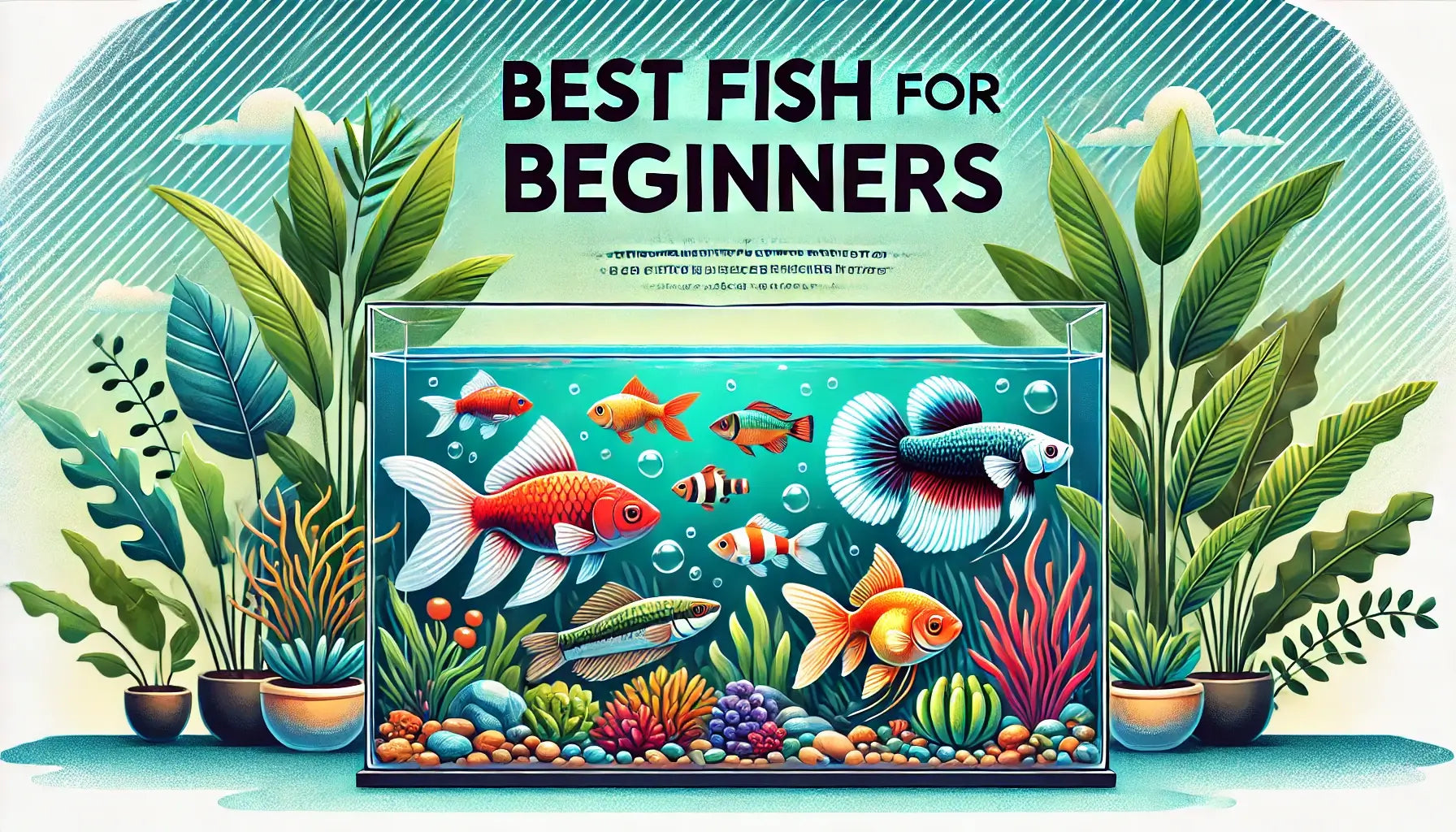Let’s Take A Look At The Best Fish for Beginners
Starting an aquarium is an exciting endeavour, offering both aesthetic pleasure and a calming presence in your home. However, choosing the right fish for your aquarium can be a daunting task, especially for beginners. This comprehensive guide will help you navigate through the options and select the best fish for your first tank, ensuring a successful and enjoyable fishkeeping experience.
1. Understanding Fish Compatibility and Tank Conditions
Before diving into specific fish recommendations, it’s important to understand a few key concepts about fish compatibility and tank conditions:
- Water Type: Fish can be freshwater, saltwater, or brackish. For beginners, freshwater fish are generally easier to care for.
- Tank Size: The size of your tank will determine how many and what type of fish you can keep. Larger tanks are more stable and can accommodate a greater variety of fish.
- Water Parameters: Different fish require different water conditions such as pH, hardness, and temperature. It’s essential to match your fish species with compatible water parameters.
- Behaviour and Compatibility: Some fish are peaceful, while others can be aggressive. Ensure the fish you choose can coexist harmoniously in the same tank.
2. Top Freshwater Fish for Beginners
Here are some of the best freshwater fish for beginners, chosen for their hardiness, ease of care, and compatibility with other fish.
Betta Fish (Betta splendens)
Appearance: Known for their vibrant colors and flowing fins, betta fish are visually stunning.
Tank Requirements: A minimum of 5 gallons, with a heater to maintain a temperature of 76-82°F.
Behaviour: Betta fish can be aggressive towards other males, so it’s best to keep them alone or with non-aggressive tank mates.
Guppies (Poecilia reticulata)
Appearance: Guppies come in a variety of colors and patterns, making them a lively addition to any tank.
Tank Requirements: A minimum of 10 gallons, with a temperature range of 72-82°F.
Behaviour: Peaceful and social, guppies thrive in groups. They are prolific breeders, so be prepared for potential fry.
Neon Tetras (Paracheirodon innesi)
Appearance: Neon tetras have striking blue and red coloration.
Tank Requirements: A minimum of 10 gallons, with a temperature range of 70-81°F.
Behaviour: They are peaceful schooling fish and should be kept in groups of at least six.
Platies (Xiphophorus maculatus)
Appearance: Platies come in various colours and are very hardy.
Tank Requirements: A minimum of 10 gallons, with a temperature range of 70-78°F.
Behaviour: Peaceful and easy to care for, platies are great community fish and get along well with other species.
Zebra Danios (Danio rerio)
Appearance: Zebra danios have distinctive horizontal stripes and are very active swimmers.
Tank Requirements: A minimum of 10 gallons, with a temperature range of 64-75°F.
Behaviour: They are hardy and adaptable, making them perfect for beginners. They prefer to be in groups.
Corydoras Catfish (Corydoras spp.)
Appearance: These bottom-dwellers are known for their peaceful nature and unique appearance.
Tank Requirements: A minimum of 20 gallons, with a temperature range of 72-78°F.
Behaviour: Corydoras are social and should be kept in groups of at least three. They help keep the tank clean by scavenging for food.
Cherry Barbs (Puntius titteya)
Appearance: Cherry barbs are small, colourful fish with a peaceful demeanour.
Tank Requirements: A minimum of 20 gallons, with a temperature range of 73-81°F.
Behaviour: They are schooling fish and do best in groups of six or more.
3. Tips for a Successful Aquarium Setup
To ensure your fish thrive, follow these essential tips:
Proper Tank Cycling
Cycling your tank is crucial before adding any fish. This process establishes beneficial bacteria that help break down waste products and maintain water quality. The cycling process can take several weeks, so patience is key.
Regular Maintenance
Water Changes: Perform regular water changes (10-20% weekly) to keep the water clean and remove toxins.
Filter Maintenance: Clean your filter regularly to ensure it functions properly.
Monitoring Water Parameters: Use test kits to monitor pH, ammonia, nitrite, and nitrate levels.
Feeding
Feed your fish a balanced diet appropriate for their species. Avoid overfeeding, as uneaten food can pollute the water and lead to health problems.
Aquarium Decor
Provide hiding places and plants to create a natural environment and reduce stress for your fish. Use decorations that are safe and won’t alter the water chemistry.
Compatibility and Stocking Levels
Research each species’ compatibility and avoid overcrowding your tank. A general rule of thumb is one inch of fish per gallon of water, but this can vary based on the species and tank setup.
4. Common Mistakes to Avoid
Overcrowding the Tank
Adding too many fish at once can overwhelm your tank’s filtration system and lead to poor water quality. Start with a few fish and gradually add more as your tank matures.
Incompatible Species
Avoid mixing species that have different water parameter requirements or those that may exhibit aggressive behaviour towards each other.
Neglecting Water Changes
Regular water changes are essential for maintaining a healthy aquarium. Neglecting this can lead to a buildup of toxins and negatively impact your fish’s health.
Improper Acclimation
When introducing new fish to your tank, acclimate them slowly to avoid shock. Float the bag in the tank to equalize the temperature, and gradually add tank water to the bag before releasing the fish.
Conclusion
Choosing the best fish for beginners involves understanding their specific needs and ensuring your tank setup is suitable. By selecting hardy, peaceful species and maintaining proper tank conditions, you can create a thriving aquatic environment that brings beauty and tranquility to your home. Happy fishkeeping!









Thank you for telling what fish are good for beginners. I can’t wait to lose my virginity to a Zebra Danios. Thanks in advanced, from a soon to be not virgin. XOXO